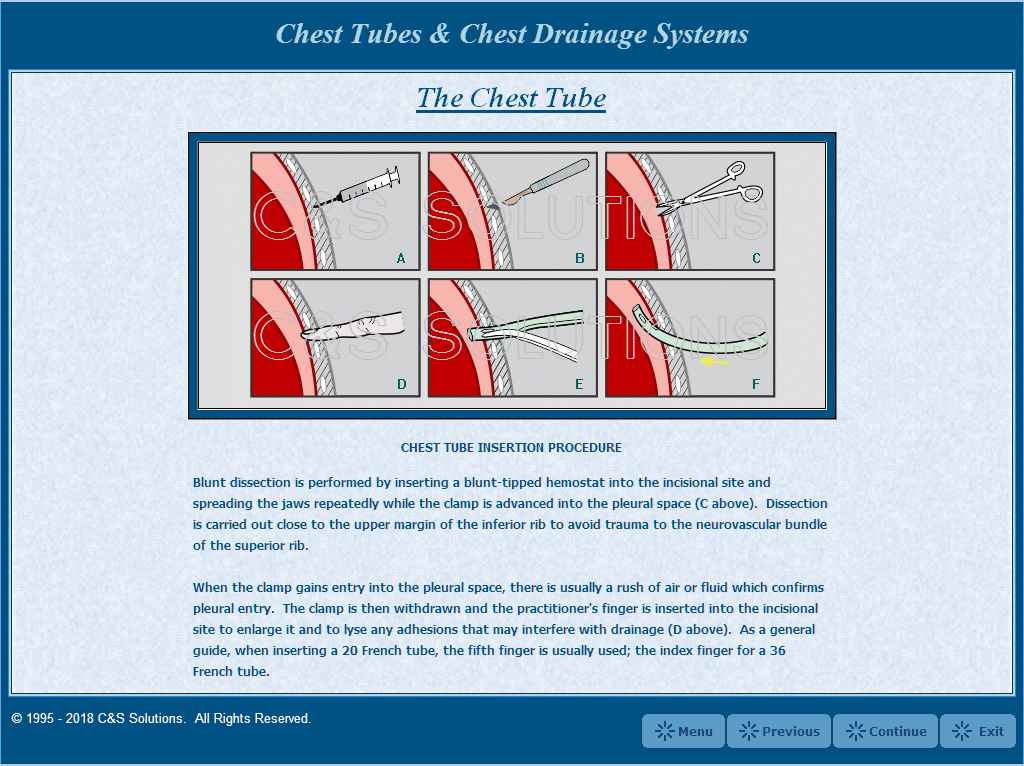Indications for intercostal drain :
a) Pneumothorax
b) Traumatic haemopneumothorax
c) Malignant pleural effusion
d) Empyema thoracis / Complicated parapneumonic effusion
e) Post-operative drainage : esophagectomy, cardiac surgery, thoracotomy
Equipments :
Intercostal tube or Chest tube (Size for pneumothorax : 36-40 Fr, hemothorax : 22-24 Fr)
Connecting tubes and compatible connectors
Underwater seal drainage bottle containing water upto mark
Line clamp
11 blade scalpel
Instruments for blunt dissection
Blue and Green needle
2 or 3/0 silk in a large hand-held needle
10ml syringe
20ml of 1% lidocaine
Normal saline
Sterile gloves
Sterile drapes
Sterile gauze
Skin prep. solution
Procedures :
1) Explain procedure to the patient if appropriate.
2) Connect the patient to a pulse oxymeter.
3) Prop up the patient to a semi-recumbent position, with the ipsilateral limb abducted.
4) Prepare the skin at the site of tube insertion (antiseptics)
5) Make proper drapping over field of interest.
6) Infiltrate the local anesthetic sufficiently, including the parietal pleura and the periosteum of the rib posterior to the line of incision.
7) Make a transverse, 2cm incison over the 5th intercostal space, over the mid-axillary line (may extend upto the anterior axillary line)
8) Proceed with blunt dissection until the pleura is visible.
9) Now, gently and firmly, by using a blunt-ended clamp, puncture the pleura, and widened the hole created.
10) Place one of your finger into the hole to ensure there's no adhesions.
11) Insert the chest tube without trochar into the puncture hole created after clamping it. Guide the tube superiorly if it's a pneumothorax, and towards the base if it's a hemothorax.
12) Fix the chest tube using the silk sutures.
13) Connect the distal end of the tube to the underwater seal drainage bottle, and remove the clamp.
Potential complications :
1) Misplacement (intra-parenchymal or subcutaneous)
2) Damaging the surrounding structures : liver, spleen, lungs, heart, aorta, diagphram, etc
3) Surgical emphysema
4) Wound infection, empyema
5) Pain



